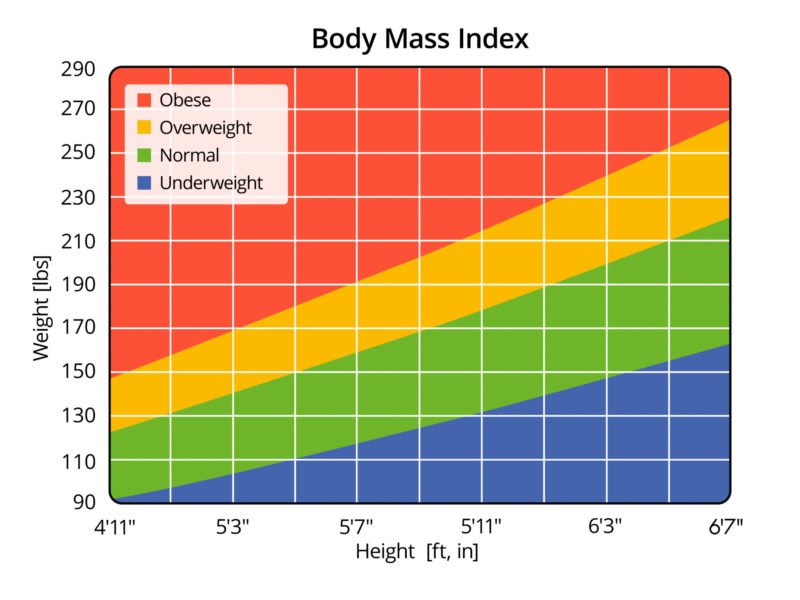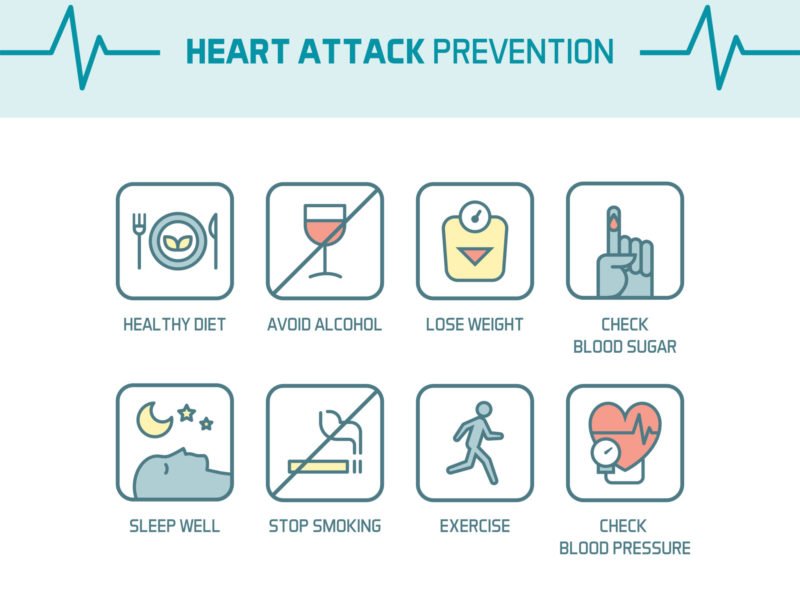Healthy Lifestyle and Genetics
Certain diseases can be prevented by living a healthy lifestyle that is full of proper nutrition and adequate exercise. For example, the insulin resistance gene is often a combination of genetic and lifestyle factors (poor diet, physical inactivity, etc). If we know we possess a gene that could lead to the formation of disease we can take proper care of ourselves and prevent disease.
Genes and Our Health
The Center for Human Genetic Research was developed in 1989 to head the Human Genome project where all of the genes in the human body were mapped out (8). We now know there are approximately 20,500 genes in the human body. The more we understand the genes in our body, the better we can understand our health and are able to create optimal treatment plans for illness. The director of Center of Genomic Medicine, Sekar Kathiresan, explains that by understanding the genes of the human body we can determine which individuals possess risk for sudden cardiac death (9).
Family History as a Risk Factor for Disease
By having knowledge of our family history we can make the right decisions for healthy living. Family history is considered one of the strongest risk factors for disease (1). Your family history can be a good indicator for determining your disease risk because their genes and environmental interactions are similar to yours (1). Cardiovascular disease, diabetes, and autoimmune disorders are some of the most common diseases that list family history as a top risk factor (1).
Lifestyle and Health
Lifestyle can be defined as our daily behaviors and everyday functions (diet, exercise, job, etc.) (2). The World Health Organization says 60% of health factors and quality of life can be traced back to lifestyle (2). An unhealthy lifestyle leads to disease and complications like hypertension, obesity, metabolic disease, and diabetes risk.
Key Lifestyle Factors
A few significant lifestyle factors influencing health are:
- Diet: Diet is one of the most influential factors in health. Poor diet can lead to obesity (2).
- Body-Mass Index: BMI can be used as a measure of poor diet and unhealthy lifestyle. Eating lots of fast food and foods without nutritional value can cause obesity. Obesity leads to issues like high blood pressure and cardiovascular disease (2).
- Exercise: Physical activity improves stress levels, body-mass index, and heart health. It is often used as part of a treatment plan for common health problems (2).
- Sleep: Lack of sleep can lead to mental and physical health problems. Proper sleep is needed for a healthy lifestyle (2).
- Substance Abuse: One of the most unfavorable lifestyles in terms of health is addiction and alcohol abuse. Smoking and abuse of prescription drugs can have detrimental health effects (2).

Lifestyle Diseases
Although an individual may not be born with a disease they may possess a high genetic risk for developing one. This is known as genetic predisposition (3). A lifestyle disease is one that is associated with the lifestyle choices a person makes such as smoking and alcohol consumption. According to the World Health Organization (WHO), 41 million people die from non-communicable diseases every year (4). Researchers have conducted many studies and clinical trials on these non-communicable diseases (cardiovascular disease and type 2 diabetes). Sometimes people are born with genetic variants that when altered by lifestyle and environmental exposure, causes an increased risk for lifestyle disease (3). By maintaining a healthy lifestyle people with these genetic predispositions can minimize their disease risk.
Cardiovascular Disease and Lifestyle
The Human Genome Project has led to a clearer understanding of the lifestyle factors influencing the development of heart disease (3). Cardiovascular disease refers to diseases that block blood vessels and lead to heart disease or heart attack. The major lifestyle choices associated with cardiovascular disease are:
- unhealthy diet
- smoking
- low physical activity
Cardiovascular disease can also be the result of single-gene mutations or the interaction of multiple genes. Heart disease is the leading cause of death in Americans (5). There are some risk factors of heart disease you cannot change: age, gender, race, family history (5). Bioimage studies show that males 45+ and females 55+ have a greater risk of developing heart disease. Gender plays a role in disease risk as the estrogen women have protects against heart disease, but diabetes in women creates a greater risk for heart disease than when men have diabetes (5). Certain races have a higher risk than others. For example, African Americans are more predisposed to heart disease than white Americans, and Hispanic Americans have the lowest risk of developing heart disease (5).
Preventative Steps to Heart Disease
If you have genetic factors that put you at risk for heart disease you should take preventative steps. These preventative steps include:
- Monitor blood pressure: High blood pressure is a leading risk factor for developing cardiovascular disease. Adults should get their blood pressure checked once a year, and if the number is high then it’s time to make lifestyle changes (5).
- Monitor cholesterol levels: LDL cholesterol can block arteries and cause coronary artery disease. Changes in lifestyle (such as diet) can lower your cholesterol levels, but depending on the severity your doctor may recommend medicine (5).
- Maintain a healthy weight: When a person becomes overweight they usually possess high blood pressure and high cholesterol levels. The American Heart Association uses blood pressure and cholesterol levels in their assessment for coronary events.
- Consume a healthy diet: Eating a diet high in trans fats and sodium can contribute to cardiovascular disease. By consuming a well-rounded diet full of green vegetables, fruits, and whole grain you can lower heart risks (5).
- Regular exercise: Physical activity can make a big difference in a person’s life. It lowers blood pressure and cholesterol levels. Exercise also helps lower body-mass index and maintain a healthy weight. Lowering blood pressure, cholesterol, and body weight makes for a low risk of cardiovascular disease (5).
- Limit alcohol: Men shouldn’t have more than 2 alcoholic drinks per day, and women not more than 1. Alcohol can increase blood pressure levels and body weight. Both of which lead to a higher risk of cardiovascular disease (5).
- Never smoke: Smoking raises blood pressure, as well as raising heart attack and stroke risk (5).
- Get enough sleep: Inadequate sleep leads to stress, obesity, and high blood pressure. Proper sleep is an essential lifestyle component in preventing cardiovascular disease.

Diabetes and Lifestyle
When the body does not produce or use insulin the way it is supposed to, diabetes forms. Insulin is a hormone we use to convert sugar and starches to produce energy (3). The exact cause of diabetes is still unknown, but researchers know genetics and environmental factors play a role in diabetes risk (3).
Types of Diabetes
Diabetes comes in 3 forms: type 1 diabetes, type 2 diabetes, and gestational diabetes.
Type 1 diabetes is when the body fails to produce insulin.
Gestational diabetes is a type of high blood sugar women get while pregnant, and it must be monitored closely (3).
Type 2 diabetes is the most commonly diagnosed form. It is described as insulin resistance because the body fails to use insulin correctly and is also insulin deficient (3). High blood sugar levels can damage the kidneys, nerves, and eyes (3).
Lifestyle Factors Impacting Type 2 Diabetes
There are a few lifestyle changes that impact the formation of type 2 diabetes:
Lose weight: Being overweight is a very large factor in developing type 2 diabetes. When a person is obese, they are much more likely to develop diabetes. Losing 5-10 percent of your current body weight can significantly lower your risk of diabetes (6).
Healthy diet plan: To lose weight and keep it off, it is important to consume less sugar. To do so:
- Replace sugary beverages (soda, juice, etc.) with water or tea (7).
- Instead of consuming highly processed carbohydrates it is important to eat whole grains (7).
- Limit processed meats and instead choose fish and poultry (7).
- Replace “bad” fats, such as trans fats, with polyunsaturated fats. Polyunsaturated fats can be found in nuts and seeds (7).

Just like CVD, smoking and physical inactivity are risk factors for diabetes.
Smoking can contribute to insulin resistance.
Physical inactivity leads to an unhealthy body weight. By exercising 5 times a week for 30 minutes you can lower your risk of type 2 diabetes (6).
Alzheimer’s Disease
Alzheimer’s is a disease of the brain that causes dementia. Dementia is the gradual loss of memory and ability to carry out daily activities (10). The majority of the time Alzheimer’s is diagnosed in people 65 years and older. Unfortunately, this disease plagues 2.4-4.5 million American’s (10). It is inherited through an autosomal dominant pattern which means having one copy of the gene is enough to cause disease (10).
Alzheimer’s is categorized by either being early-onset or late-onset. Early onset is when signs of the disease occur before age 65 and late-onset occurs after 65. The late onset is less understood than the early on-set. Most cases of early-onset are due to inherited genes (10). There are three gene mutations linked to Alzheimer’s: APP, PSEN1, and PSEN2. A mutation in one of these 3 genes causes expression of the disease (10). When one of these genes is mutated, a protein called amyloid beta peptide is produced in the brain (10). Amyloid beta peptide is a toxic protein, and when a buildup occurs in the brain it is known as Alzheimer’s (10).
Preventing Alzheimer’s Via Lifestyle
Like the other diseases mentioned, there are a few lifestyle choices that could help prevent the development of Alzheimer’s disease.
- Eat a Mediterranean Diet: Researchers believe that a Mediterranean diet is able to help prevent or slow the progression of Alzheimer’s (11). A Mediterranean diet includes an abundance of whole grains, olive oil, nuts, and fish. It also includes moderate amounts of poultry, eggs, and dairy (11).
- Moderate exercise: Physical activity is also known to prevent or slow the progression of Alzheimer’s (11). Researchers suggest aerobic exercise 3-4 days a week for 30 minutes (11).
- Sleep: Seven to eight hours of sleep per night can help prevent Alzheimer’s. It is shown to help minimize the amount of the toxic amyloid protein in the brain (11).
Genetic Testing for a Healthy Lifestyle
If we know we have a chance of developing a disease later in life, then we’ll want to take every possible preventative step. Sometimes diseases are prevented by eating a healthy diet and getting regular exercise. A good preventative measure is genetic tests. Genetic tests can inform you of the genes in your body, and more about your family history. This makes it easier to know which diseases should be on your radar. For example, if you have the FTO gene (a gene associated with obesity), then you’ll want to do everything you can to keep your body-mass-index at a healthy level (12).
Citations
- https://www.ncbi.nlm.nih.gov/books/NBK19932/
- https://www.ncbi.nlm.nih.gov/pmc/articles/PMC4703222/
- http://www.who.int/genomics/public/geneticdiseases/en/index3.html
- http://www.who.int/news-room/fact-sheets/detail/noncommunicable-diseases
- https://medlineplus.gov/howtopreventheartdisease.html
- https://medlineplus.gov/howtopreventdiabetes.html?_ga=2.176951525.1993213736.1540402461-906730935.1537469596
- https://www.hsph.harvard.edu/nutritionsource/disease-prevention/diabetes-prevention/preventing-diabetes-full-story/
- https://www.genome.gov/27534788/about-the-institute/
- https://www.massgeneral.org/News/newsarticle.aspx?id=6167
- https://ghr.nlm.nih.gov/condition/alzheimer-disease#genes
- https://www.health.harvard.edu/alzheimers-and-dementia/what-can-you-do-to-avoid-alzheimers-disease
- https://www.ncbi.nlm.nih.gov/pmc/articles/PMC3137002/


 Nutritional Epigenetics and Our Health
Nutritional Epigenetics and Our Health